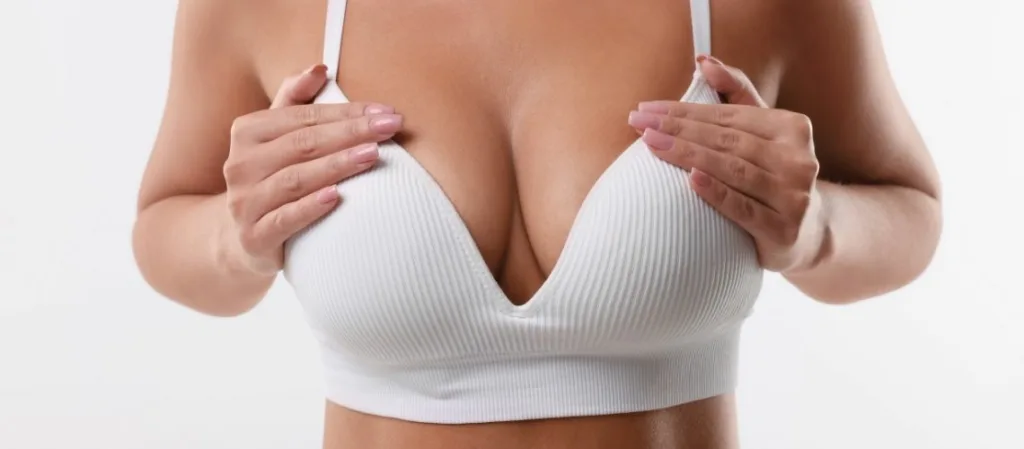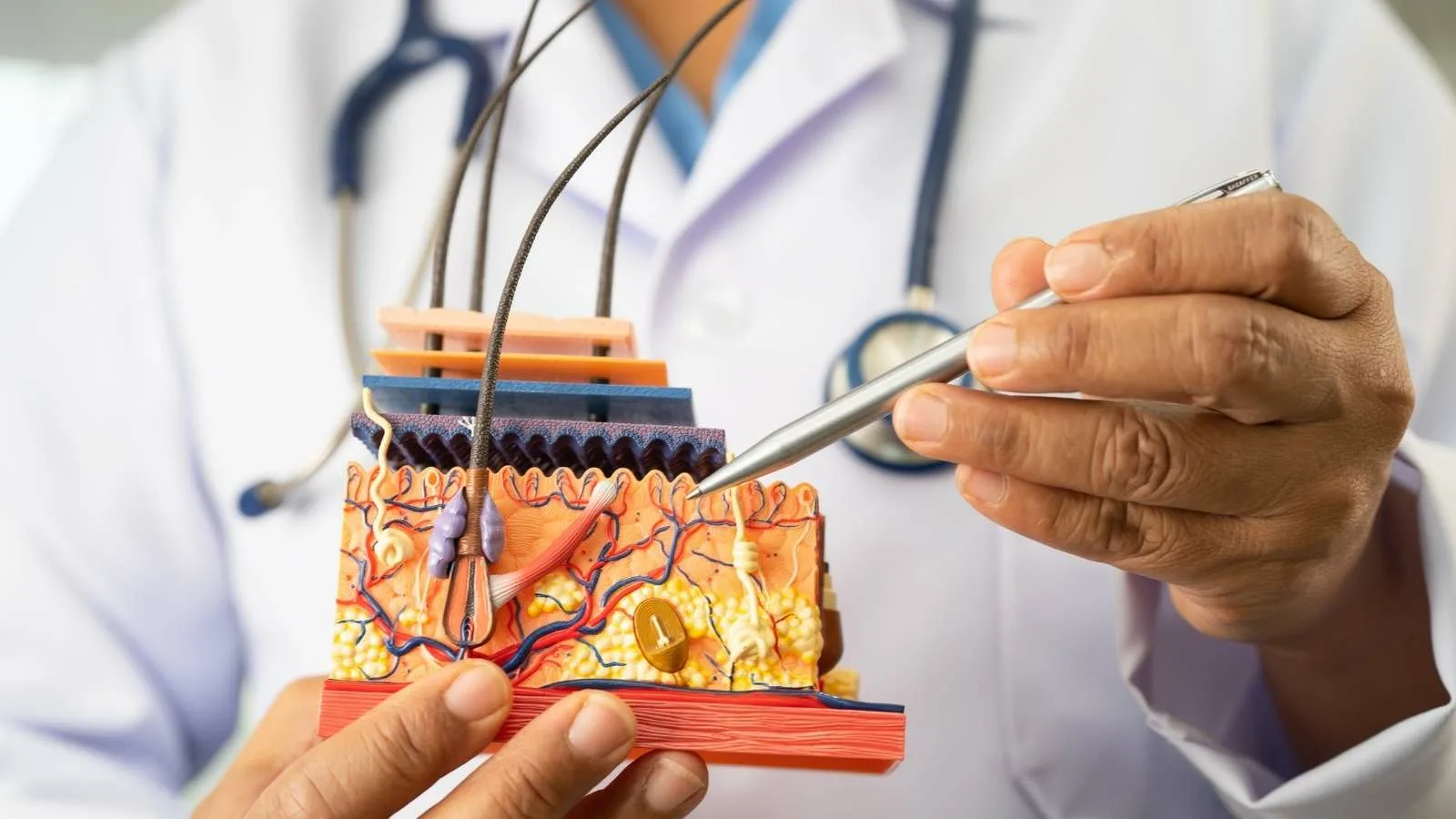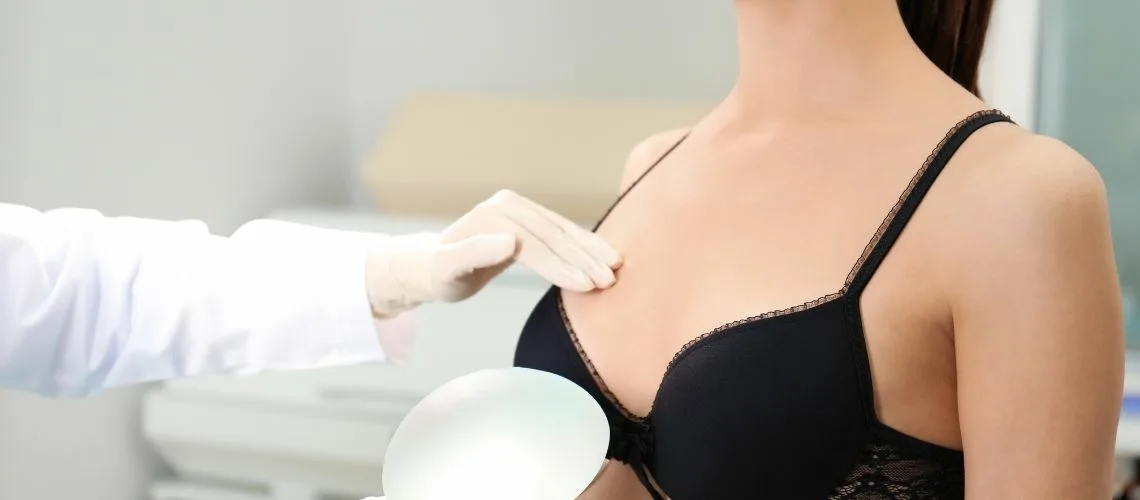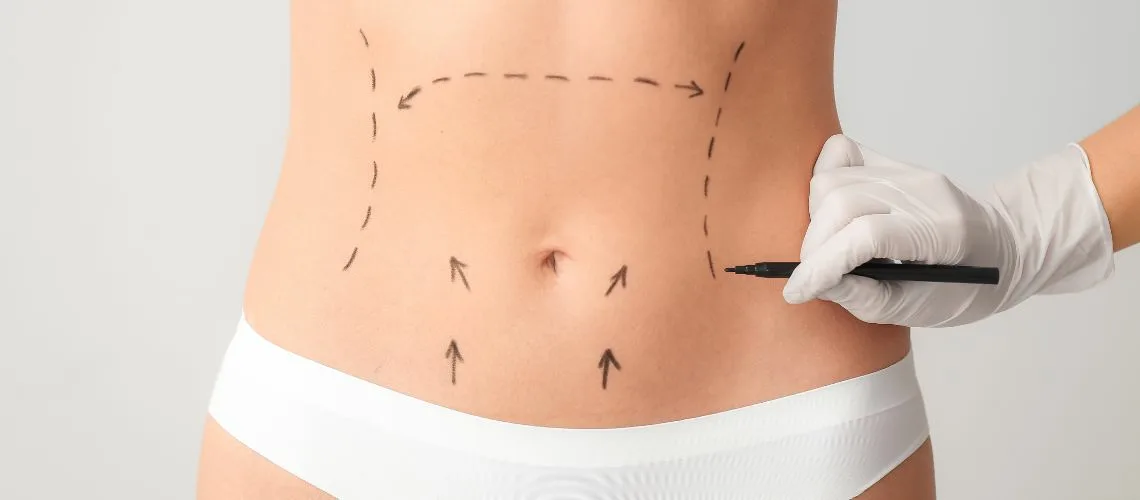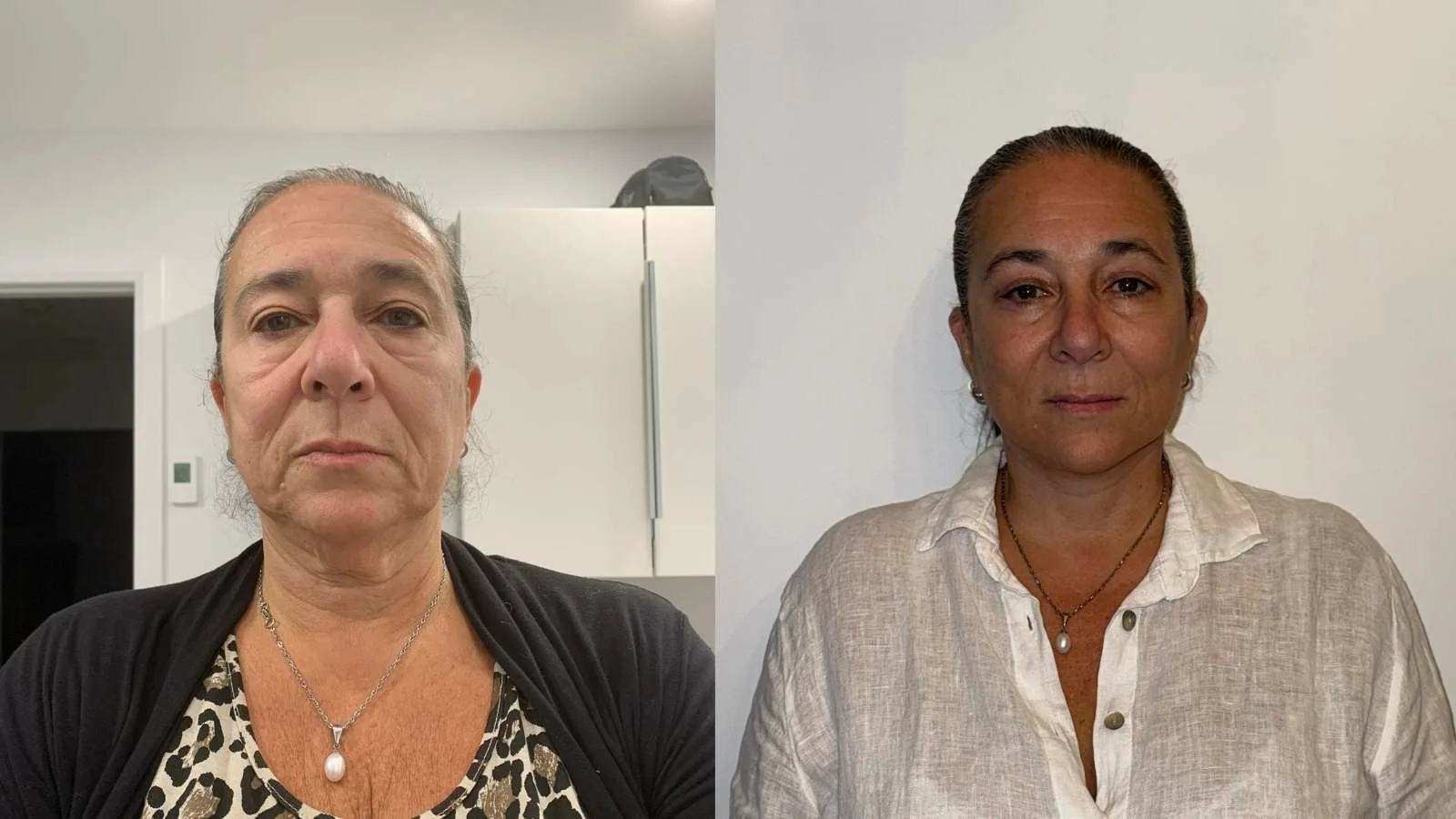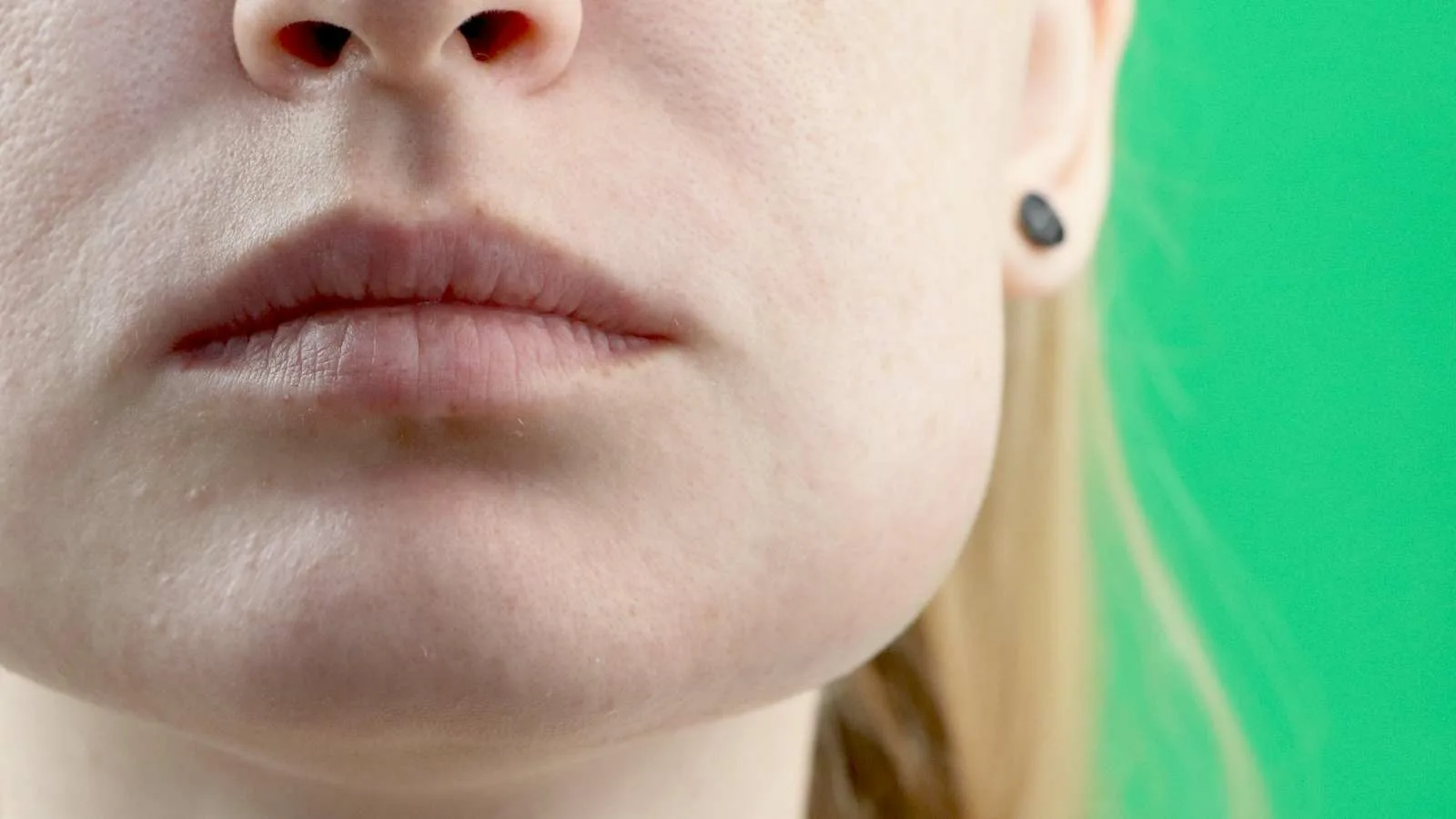Wearing bras does not harm breast tissue or increase the risk of breast disease. Bras are supportive garments that help reduce discomfort caused by breast movement, especially during physical activity, but they do not directly affect breast health or shape.
The relationship between bras and breast sagging has been widely debated. Scientific evidence shows that sagging primarily results from aging, gravity, genetics, and hormonal changes, rather than regular bra usage or lack thereof.
Wearing a properly fitted bra provides comfort and prevents musculoskeletal strain. Incorrect sizes, however, may cause shoulder, back, or skin irritation. Thus, bra selection should be based on individual anatomy and daily activity needs.
Medical recommendations emphasize that bras neither prevent nor cause medical conditions. Instead, lifestyle, hormonal balance, and natural tissue changes remain the key factors influencing breast firmness, elasticity, and overall appearance.
What Is the Relationship Between Bras and Breast Health?
Bras primarily aim to distribute the weight of the breasts more evenly across the shoulders and back, offering comfort. This can be especially important for individuals with larger breasts, as it can help reduce shoulder and back pain. But questions arise: Do breasts inherently provide their own support, or is external support always beneficial?
- The Need for Breast Support
Breast tissue mainly consists of fat, connective tissue (including Cooper’s ligaments), and glandular (milk-producing) structures. Over time, factors such as weight fluctuations, pregnancy, breastfeeding, aging, and smoking may weaken these ligaments. While you can’t fully prevent the gradual loosening caused by aging and gravity, a bra can reduce excessive movement and provide added support throughout daily activities or exercises.
- The Basic Function of Bras
Think of a bra as a protective bandage for an ankle sprain: it helps stabilize and support. Bras similarly reduce unwanted bouncing, making physical movement more comfortable—especially for those with heavier breasts. Everyone’s comfort threshold varies: some prefer structured support, while others opt for light sports bras or bralettes.
- Historical Context and Modern Perspectives
Throughout history, people have sought methods to support their breasts, from corsets to today’s more comfortable bras. Questions such as “Will not wearing a bra keep my breasts perkier?” or “Will I face long-term problems without a bra?” have always emerged. The answers depend on breast anatomy and lifestyle—there’s no universal rule that applies to everyone.
Do Bras Increase Breast Cancer Risk?
One of the most pervasive claims is that bra usage—especially underwire bras—causes breast cancer, typically under the rationale that it constricts the lymphatic channels and “forces toxin accumulation.”
- What Do Scientific Studies Show?
Large-scale research, including from the Fred Hutchinson Cancer Research Center, has not found a clear correlation between bra-wearing habits and breast cancer. Participants were asked about daily bra-use duration, bra style (underwire vs. wireless), and age at first bra usage. The outcomes revealed no direct link to higher breast cancer incidence.
Likewise, the notion that moderate bra pressure fully blocks lymph flow, causing toxin buildup, lacks solid evidence. The lymphatic system is widespread; a bra’s pressure is usually insufficient to halt overall lymph circulation. Additionally, major detoxification occurs via organs like the liver and kidneys, not by “breast lymph flow.”
- Bottom Line
“Wearing a bra will cause cancer” is not supported by scientific consensus. Factors that do significantly raise cancer risk include genetics, obesity, alcohol and tobacco use, advanced age, and hormonal variations. If a bra makes you comfortable, you don’t need to worry about it as a cancer risk.
Does a Tight Bra Block Lymph Circulation?
Another widespread concern involves tight bras and impaired lymph drainage. Women often ask, “Does wearing a bra cause underarm swelling or block lymph flow?”
- Structure of the Lymphatic System
The lymphatic system removes excess fluid and waste while assisting the immune response. In the breast region, lymph typically drains to nodes under the arm (axillary lymph nodes). While intense or prolonged compression can theoretically slow lymph flow, everyday bra pressure is generally not strong enough to cause significant lymphatic obstruction.
- Contradictory Findings in Research
Some smaller or questionnaire-based studies suggest that prolonged, highly constrictive bra use may slightly slow lymph flow. However, other studies find no clinically meaningful effects. The consensus is that “normal” bra pressure during daily wear is insufficient to harmfully stall lymphatic drainage.
- Key Considerations
A properly fitted bra is vital for comfort and health. If you experience persistent tightness, redness, or pain, reassessing the band size or style is wise. Not all bras apply excessive compression. Listening to your body can prevent unnecessary discomfort or potential complications.
Does Going Braless Prevent Sagging?
A long-standing question is whether forgoing a bra helps keep breasts perkier. This debate intensified when French researcher Jean-Denis Rouillon published a 15-year observational study: Young participants with smaller breasts who went braless experienced slightly higher nipple placement than those who wore bras.
- Study Details and Critiques
Rouillon’s participants were mostly 18 to 35 years old with smaller breasts. While the study noticed a small upward shift in the nipple’s position, critics argue its sample doesn’t represent the general population. Larger-breasted women or older age groups might have different outcomes, making it tough to universalize the results.
What Really Causes Sagging (Ptosis)?
Breast ptosis depends on genetics, aging, weight changes, number of pregnancies, and smoking. Smoking impairs the skin’s elasticity, while multiple or closely spaced pregnancies can stretch tissues. In general, these factors outweigh whether you routinely wear a bra or not.
Cooper’s ligaments, which provide breast support, can be likened to tent ropes. A bra may reduce movement strain, but if the ligaments themselves weaken (due to age or lifestyle), sagging can still occur. Scientific evidence does not conclusively show that bra usage—or its absence—directly prevents or causes sagging in all women.
Is Wearing a Bra at Night Harmful?
Many wonder if sleeping in a bra might damage breast tissue. Women with larger breasts sometimes find wearing a soft bra or sleep bra at night more comfortable, as it reduces discomfort from shifting breasts during sleep.
- Any Proven Harm?
Research does not indicate that wearing a bra at night is specifically harmful. Some specialists believe a soft, non-underwire bra can relieve tenderness in fibrocystic breasts or support healing after procedures. But a tight underwire bra might irritate the skin or cause discomfort. Ultimately, comfort and a suitable bra type are key.
Is a Bra Essential During Exercise?
In daily life, a bra can be optional. However, for exercise—particularly running or high-impact workouts—breast support is crucial. Without support, the breasts can experience a figure-eight movement that strains Cooper’s ligaments and causes discomfort.
The Role of Sports Bras
- Compression Bras: Press the breasts against the chest, limiting motion.
- Encapsulation Bras: Each breast has its own “cup,” minimizing bounce even more effectively.
For moderate or large cup sizes, encapsulation bras often deliver better support. Proper support not only reduces discomfort but also helps maintain focus during workouts, boosting performance and confidence.
What Problems Can the Wrong Bra Size Cause?
Bra-related comfort and support depend significantly on correct sizing. Many women unintentionally wear the wrong size, leading to various issues:
- Shoulder and Neck Pain: If the band is too loose, the straps bear excessive weight, causing shoulder indentations and tension around the neck.
- Skin Irritation or Sores: A tight band or underwire can create friction and pressure points, causing redness or chafing.
- Breathing Difficulty: An overly tight band may restrict ribcage expansion, making breathing uncomfortable, especially during activities.
- Posture Problems: Insufficient support can lead to slouching or rounded shoulders.
- Movement Limitation: Tight or ill-fitting bras can restrict upper body and arm motion.
How to Find the Right Size?
Many lingerie shops offer measuring services for band size (under bust) and cup size (fullest part of the bust). However, band and cup sizing can vary across brands, meaning a 34C in one brand might fit like a 36B in another. During fitting:
- If the back band rides up, the band might be too loose or the cup too small.
- If your breast tissue overflows from the cup, you likely need a larger cup size.
- If the cups gap, the cup size may be too large.
Ultimately, trial and error—rather than a one-size-fits-all formula—often ensures the best fit.
The Psychological Aspect of Wearing (or Not Wearing) a Bra
Discussions about bra use typically revolve around physical health, but psychosocial factors also play a part. Cultural norms, media portrayals, personal preference, and self-esteem intertwine with “to wear or not to wear?”
- Body Image and Confidence: Breasts are a central aspect of many women’s body image. Some feel more secure and supported in a bra, while others find going braless liberating. In both cases, the choice can be empowering and influence daily comfort.
- Social Expectations: In numerous cultures, wearing a bra is the norm. Fears of social disapproval might discourage some from trying bralessness. Conversely, women who dislike bras may see forgoing them as a freedom statement. Ultimately, balancing comfort with cultural context is vital.
- Emotional Well-Being: An ill-fitting bra can cause physical stress and psychological discomfort; a proper one can increase ease and confidence. The best choice aligns with personal preferences and comfort needs.
- After Surgery or Mastectomy: Postoperative bra usage depends on a patient’s needs, physical healing, and emotional readiness. Specialized, gentle post-surgical bras can offer both physical support and a psychological sense of security during recovery.

Op. Dr. Erman Ak is an internationally experienced specialist known for facial, breast, and body contouring surgeries in the field of aesthetic surgery. With his natural result–oriented surgical philosophy, modern techniques, and artistic vision, he is among the leading names in aesthetic surgery in Türkiye. A graduate of Hacettepe University Faculty of Medicine, Dr. Ak completed his residency at the Istanbul University Çapa Faculty of Medicine, Department of Plastic, Reconstructive and Aesthetic Surgery.
During his training, he received advanced microsurgery education from Prof. Dr. Fu Chan Wei at the Taiwan Chang Gung Memorial Hospital and was awarded the European Aesthetic Plastic Surgery Qualification by the European Board of Plastic Surgery (EBOPRAS). He also conducted advanced studies on facial and breast aesthetics as an ISAPS fellow at the Villa Bella Clinic (Italy) with Prof. Dr. Giovanni and Chiara Botti.
Op. Dr. Erman Ak approaches aesthetic surgery as a personalized art, tailoring each patient’s treatment according to facial proportions, skin structure, and natural aesthetic harmony. His expertise includes deep-plane face and neck lift, lip lift, buccal fat removal (bichectomy), breast augmentation and lifting, abdominoplasty, liposuction, BBL, and mommy makeover. He currently provides safe, natural, and holistic aesthetic treatments using modern techniques in his private clinic in Istanbul.

